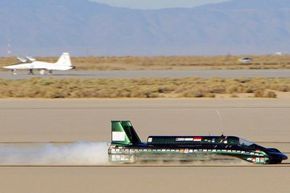In the future, all of us will own flying cars. Oh, wait -- that's "The Jetsons." Our views of future transportation are a little more realistic, but cars will increasingly use electric power, reducing our dependence on fossil fuels. Right?
That outcome is by no means certain. In fact, there are some mechanically-inclined people who think that the way of the automotive future lies in another direction entirely: steam-powered engines. And though it might sound a bit antiquated, it's less dated than one might imagine.
Advertisement
Powering a vehicle with steam isn't so much an innovation as it is revisiting an old idea. Plans for steam-powered vehicles date as far back as the 17th century. Around 1672, a Flemish Jesuit named Ferdinand Verbiest drew up the specs for a very small steam-propelled vehicle (possibly a toy) while living at the Imperial Chinese court. There's little evidence to suggest that Verbiest ever built the vehicle, but a better-documented first attempt is that of Nicolas-Joseph Cugnot in 1769. His steam-powered carriage was slow and quickly ran out of steam (literally), but it still marked a breakthrough in transportation.
Innovations in steam power continued throughout the 19th century. By the time automobiles starting becoming commonplace on city streets, steam-powered cars were one of the options. The Stanley Motor Carriage Company produced steam vehicles that were affectionately known as Stanley Steamers or Flying Teapots. They were very popular in the early 1900s, but it soon became cheaper and more efficient to purchase what is now the norm for commercial automobiles -- a car with an internal combustion engine. This means that fuel is burned inside the engine, and the explosion from the burning gasoline results in the pressure necessary to turn the moving parts of the engine. In contrast, steam-powered engines work by external combustion, which means that a fuel source is required outside the engine to produce the steam that propels the moving parts. Thus far, internal combustion engines have proven themselves to be physically smaller and more fuel-efficient than their external cousins.
But that might be changing. A handful of mechanically-inclined tinkerers and entrepreneurs have set out to build more efficient steam engines. Some, like the British Steam Car Team, seem to be in it for the challenge and fun. Then there's Harry Schoell, whose company, Cyclone Power Technologies, has produced a steam-driven automotive engine that might actually convince consumers to give water vapor power a try. While the steam engines of the past have been large and unwieldy, Schoell's engines would fit easily into the footprint of a standard internal combustion engine.
So what's different? Schoell's design is built on a closed-loop system of heating and cooling, which makes the engine much more efficient and produces less waste than previous models. The steam gets so hot that it behaves more like a liquid, which yields more power. It's also less expensive to produce and maintain because it doesn't need a catalytic converter, muffler, oil or a transmission like an internal combustion engine. But best of all, in this era of fossil fuel anxiety, you can use any fuel you like to kick-start the steam process, whether that's gasoline from petroleum or biofuel.
But will steam-powered engines be used on large scale? Read on to learn more.
Advertisement


